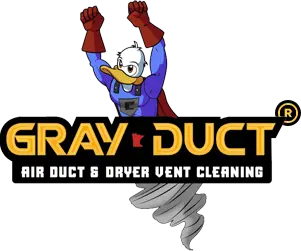System fogging is a crucial practice for maintaining a safe and healthy home environment. This method involves dispersing a fine mist of disinfectant or cleaning agents throughout your HVAC system to eliminate harmful contaminants. It’s an effective way to target areas that might be difficult to clean manually, ensuring comprehensive coverage and sanitation.
When our professionals perform system fogging, they help improve the overall air quality in your home. This process is particularly important for households with individuals who suffer from allergies, asthma, or other respiratory issues. By reducing the number of airborne contaminants, system fogging creates a cleaner, healthier indoor environment.
Investing in regular system fogging can also prolong the lifespan of your HVAC system. By removing dust, mold, and other debris, system fogging helps maintain the efficiency of your system, reducing wear and tear and potentially lowering energy costs. Understanding the importance and benefits of system fogging is essential for any homeowner dedicated to ensuring their home remains a safe haven for their family.
How System Fogging Works
System fogging is an advanced cleaning method designed to deeply sanitize your HVAC system. The process begins with our professionals preparing a solution of disinfectant or cleaning agents. They then use specialized equipment to disperse this solution as a fine mist or fog. This fog permeates every part of the HVAC system, from the air ducts to the coils and filters.
The fog particles are tiny enough to reach all the nooks and crannies within the system. This ensures comprehensive coverage, making it more effective than manual cleaning alone. The disinfectant solution works to kill bacteria, mold spores, and other harmful contaminants that may reside in the system. The fogging equipment consistently sprays the solution, ensuring an even distribution throughout the entire system.
Our technicians monitor the process to ensure that the fogging solution reaches every critical area. Once the fogging is complete, the solution is given time to settle and work its sanitizing magic. After a specified period, the HVAC system is then turned on to help circulate the solution further, ensuring that all contaminants are addressed. This thorough approach makes system fogging a highly effective way to clean and disinfect your HVAC system, enhancing its efficiency and safety.
Benefits of System Fogging
The benefits of system fogging extend beyond just cleaning your HVAC system. One of the primary advantages is improved air quality. When the system is fogged, harmful contaminants such as mold, bacteria, and dust mites are eliminated. This results in cleaner air circulating throughout your home, which is especially beneficial for those with respiratory conditions or allergies.
Another significant benefit is the increased efficiency of your HVAC system. A clean system operates more smoothly and effectively, which can result in lower energy bills. By removing build-ups of dust and debris, system fogging reduces strain on the HVAC components. This means your system doesn’t have to work as hard to maintain the desired temperature, thus saving energy and extending its lifespan.
System fogging also contributes to a safer home environment. By eliminating mold spores and bacteria, you reduce the chances of health issues arising from poor air quality. This is crucial for homes with children, elderly individuals, or anyone with underlying health conditions. Regular fogging helps maintain a clean, healthy living space, giving you peace of mind.
Lastly, system fogging can prevent unpleasant odors that often result from mold or bacteria in the HVAC system. A clean system ensures that the air circulating in your home smells fresh and remains free of potential pollutants. The combined benefits of improved air quality, increased system efficiency, enhanced safety, and odor control make system fogging a valuable investment for any homeowner.
Common Contaminants Targeted by Fogging
System fogging is designed to target a wide range of contaminants that may be present in your HVAC system. One of the most common contaminants is dust. Over time, dust particles accumulate within the air ducts and other components, which can lead to reduced airflow and lower system efficiency. Fogging effectively removes these particles, enhancing both air quality and HVAC performance.
Mold is another frequent culprit within HVAC systems. Mold spores thrive in damp, dark environments, making air ducts an ideal breeding ground. These spores can spread throughout your home, potentially causing respiratory issues and other health problems. Our professionals use fogging solutions that specifically target and eliminate mold spores, ensuring your system remains mold-free.
Bacteria and viruses are also common contaminants targeted by fogging. These microscopic organisms can linger in your HVAC system, contributing to poor indoor air quality and increasing the risk of illnesses. By using disinfectant solutions during the fogging process, our technicians are able to kill a wide range of bacteria and viruses, promoting a healthier indoor environment.
Pollen and pet dander are additional contaminants that system fogging can address. These allergens can cause significant discomfort for those with allergies or asthma. System fogging removes these particles from the air ducts, alleviating symptoms and helping everyone in the household breathe easier. By targeting such a diverse array of contaminants, system fogging ensures a comprehensive and thorough cleaning of your HVAC system.
When to Schedule System Fogging
Determining the best time to schedule system fogging is essential for maintaining a clean and efficient HVAC system. One key indicator is the presence of visible dust or mold around your air vents. If you notice these signs, it’s a good idea to contact our professionals for an inspection and potential fogging service. Another indicator is an increase in allergy or asthma symptoms among household members, which could suggest that your indoor air quality has declined.
Home renovations or remodeling projects can also generate significant amounts of dust and debris that find their way into your HVAC system. Scheduling system fogging after completing such projects can help remove the contaminants introduced during construction. This ensures that the air circulating in your home remains clean and safe.
Another appropriate time for system fogging is during seasonal transitions, especially as you prepare to switch from heating to cooling or vice versa. These periods often involve the HVAC system working harder, so starting the season with a clean system can improve efficiency and performance. Regularly scheduling fogging, at least once a year, helps maintain optimal air quality and system health.
Scheduling system fogging when you notice foul odors emanating from your HVAC system is crucial. Unpleasant smells can signify the presence of mold, bacteria, or other contaminants. Fogging can effectively eliminate these odors, ensuring that the air in your home smells fresh and clean.
Conclusion
System fogging plays an essential role in maintaining a safe and healthy home environment. It effectively targets and eliminates common contaminants such as dust, mold, bacteria, and allergens, significantly improving air quality. Regular fogging enhances the efficiency and lifespan of your HVAC system, ensuring it operates at peak performance.
Understanding when to schedule system fogging is vital. Indicators like visible dust, increased allergy symptoms, home renovations, and seasonal changes signal that it’s time for a thorough cleaning. Taking proactive steps to maintain your HVAC system will lead to a cleaner, healthier living space.
For comprehensive system fogging services, contact Gray Duct Technologies. Our experts are dedicated to providing top-notch air duct cleaning services in Minneapolis, including system fogging solutions. Schedule your appointment today and experience the benefits of a cleaner, safer home!



